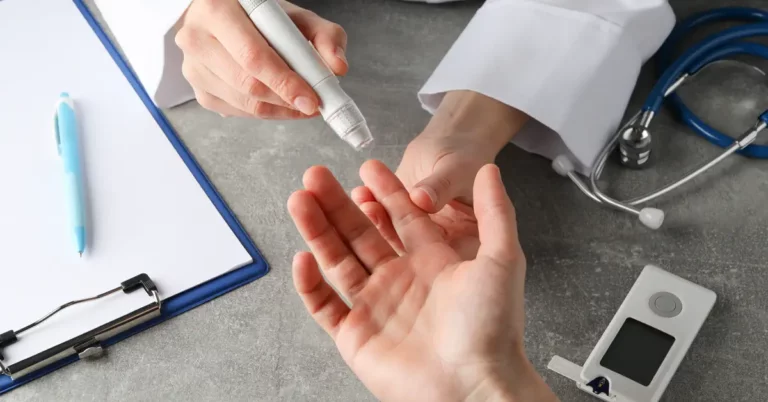Maintaining good health, and treating physical, mental, and behavioral health conditions is costly, therefore seeking better solutions to achieve this purpose is considered a valuable investment. A recent report shows that those patients with behavioral health conditions and physical health conditions drive high healthcare costs, computed as 44% spending on healthcare. Statistics estimates 30 million US patients, or 11.2% of the population, will use RPM tools by 2024—marking 28.2% growth from 23.4 million patients in 2020. Providers using RPM-enabled home health monitoring systems and other telehealth delivery methods are already reducing hospital readmission penalties. A Medical Center, for example, reduced the risk of hospital readmissions by 76% — and held patient satisfaction scores over 90% — by equipping patients with tablets and RPM equipment. In this time of COVID-19 pandemic, healthcare organizations have made considerable importance on investments in the form of telehealth access like Remote Patient Monitoring (RPM). The investments were in accordance with an equivalent rise in consumer demand in telehealth capacity. Therefore, RPM is considered a valuable investment because it gives benefits to both patients and healthcare providers. Here are the top four reasons healthcare providers should invest in RPM:
Why Healthcare Providers should invest in RPM?
In order for health systems to be successful in the future, they have to make early investments in digital health technologies that enable adaptability while prioritizing affordable and scalable solutions, according to the current analysis. RPM is one of the best examples of investment in terms of telehealth solutions owing to its capacity to automate monitoring systems. In some recent surveys, health executives targeted to add remote patient monitoring as an essential of their virtual care strategy. Another survey believed that digital transformation is a universal and urgent need for their health system to survive long term and sustain quality patient services.
Monitoring multiple numbers of patients especially dealing with hundreds manually takes a lot of time and effort, but RPM can accurately automate the whole process. Through accumulating clinically applicable data, providers can have more high-yielding conversations informing the patients’ bigger picture of health conditions while perceptively addressing the issues in order to avoid health deterioration and reduce healthcare costs.
1. Continuous real-time access to Patient-Generated Health Data (PGHD)
Patient-Generated Health Data (PGHD) are health data or any data relative to health collected by a patient, such as biometric data, symptoms, choices in lifestyle, and history on treatment. These data gained are identified from the patients’ health data within clinical scenarios in two ways: patients, not healthcare providers, will take main responsibility in collecting the information or data; and patients will have the right to choose how and with whom they can share the data they have. The patients will wear the medical devices and can collect data anytime as the doctors can evaluate and review the data as part of making decisions and judgments. PGHD management was like remote monitoring of some health problems like cardiac arrhythmia and of sleep disorders.
Through RPM data will automatically be collected, as it flows to wearable platforms, where they can analyze and can have access anytime during consultation. This information can be recorded and put into a checklist-like assessment that will be used for evaluation and reporting and use for patient care. Continuous real-time RPM allows doctors to respond according to the patients’ physiological data. This will help to provide a higher quality of care and will enhance health outcomes. The medical specialists monitor their patients through calls and videos, at the same time they can watch patients’ vital signs in real-time. This will allow one person in remote areas can be notified immediately by the health providers if something was gone wrong.
2. Accessible care delivery anytime and anywhere
The essential key to setting up an RPM program for patients with chronic care needs is persistent anytime anywhere where medical devices are used to track their health. Health providers can now keep track of their patient’s health every day, often through those devices, they can get a monitor and present key vital signs. Using a mobile device or computer the doctor will track their vital signs and symptoms as well as set out their home-based treatment plan based on the data collected. The mobile device acts as a system for remote patient monitoring, as it sends patients’ health data in real-time to caregivers or providers wherever they are and any time of the day. This offers a better system for tracking the vital signs of dialysis patients and ensuring the best possible care number of patients.
Once health data is captured through the use of medical devices, data can be copied or downloaded, or be recorded for review anywhere in real-time. After that, the doctor can now analyze even with the care coordination team and then discuss how that data might affect the health of the patient. That discussion can be done to enhance health outcomes or reverse negative results that might happen.
3. Reduced patient no-shows or cancellations
Recently, a Medical Group Management Association (MGMA) poll revealed that providers are using different means of communication methods to protect their healthcare revenue from missed appointments in order to prevent no-shows or cancellations. The recent survey revealed that most practices are going beyond just a phone call to remind patients about scheduled appointments. Their practice employs multiple communication methods to connect with their patients and no-shows can be prevented.
Through RPM that has the ability to communicate with patients to send information, reminders, and confirm appointments healthcare providers can now manage access and schedule beyond hospitals and clinics. The automated methods can now reach the patient that will help reduce no-shows and even motivate their patients via phone calls or through the use of advanced technology.
4. Avoid potential COVID-19 cross-infection
In the midst of the COVID-19 pandemic, connected health and RPM enhance its value because they will help physicians access patients’ data without having to come into contact with them and require no-face-to-face, thus preventing the spread of the novel coronavirus. Hospitals throughout the nation are using connected health and RPM to great effect during the pandemic.
With remote patient monitoring providers can give maximum care to patients managing one or more chronic diseases, improving health outcomes from a distance to avoid cross-infection to any viruses like COVID-19. The monitoring of patient is important if you are running tasks, going into the office or workplace, and in settings where it may be hard to keep a physical distance of 6 feet so RPM can be a great help because the doctor can still deliver their services anywhere staying out from infection.
Benefits of Remote Patient Monitoring to Patients
A study published that, through RPM, more readmissions in hospitals are being reduced because health care providers keep tracking their patients’ conditions anytime anywhere and needed interventions applied directly to the patients. In addition to that, experts say that at-home treatment is safer, cheaper, and more efficient as compared to the traditional delivery of care especially to the most vulnerable patient such as the elderly and immunocompromised.
RPM is the new trend of the healthcare system where the patient is taken care of and closely monitored through medical devices in a remote area, office, or even at the comfort of their home. Therefore, patients’ health conditions are treated the same service in the comfort of their own homes by their healthcare providers through RPM.
These are remarkably implemented in a more accessible manner, increase better outcomes in the patients’ health conditions and cut patients’ costs solely considered the following relevant impact and valuable investment to patients.
- RPM has been proven effective at helping patients with chronic illnesses due to its tracking capability to monitor the patients’ health data and vital signs.
- RPM electronically receives, access, and transmits data and clinically responds to the situation of their patients when needed interventions are required thus helping prevent admissions or readmissions.
- As a result, a patient can save his effort, time, travel costs for a scheduled appointment, visits, or even admissions.
- Patients’ health conditions are treated the same service in the comfort of their own homes by their healthcare providers.
- Health providers can continuously access past and current patients’ health data.
- Doctors can monitor the patient 24/7.
- Patient will be at peace for his physiological data and vital signs will be taken care of by the doctors.
How DrKumo Helps
DrKumo goes beyond the required standard to provide the best of care to patients. It focuses on serving the patients, and its mission is the health of the patients. DrKumo has the best people, processes, and technology to serve that gives benefits to patients. Continuous connection to the care team makes patients feel safer and more secure at home. They can improve patients’ overall healthcare experience.








